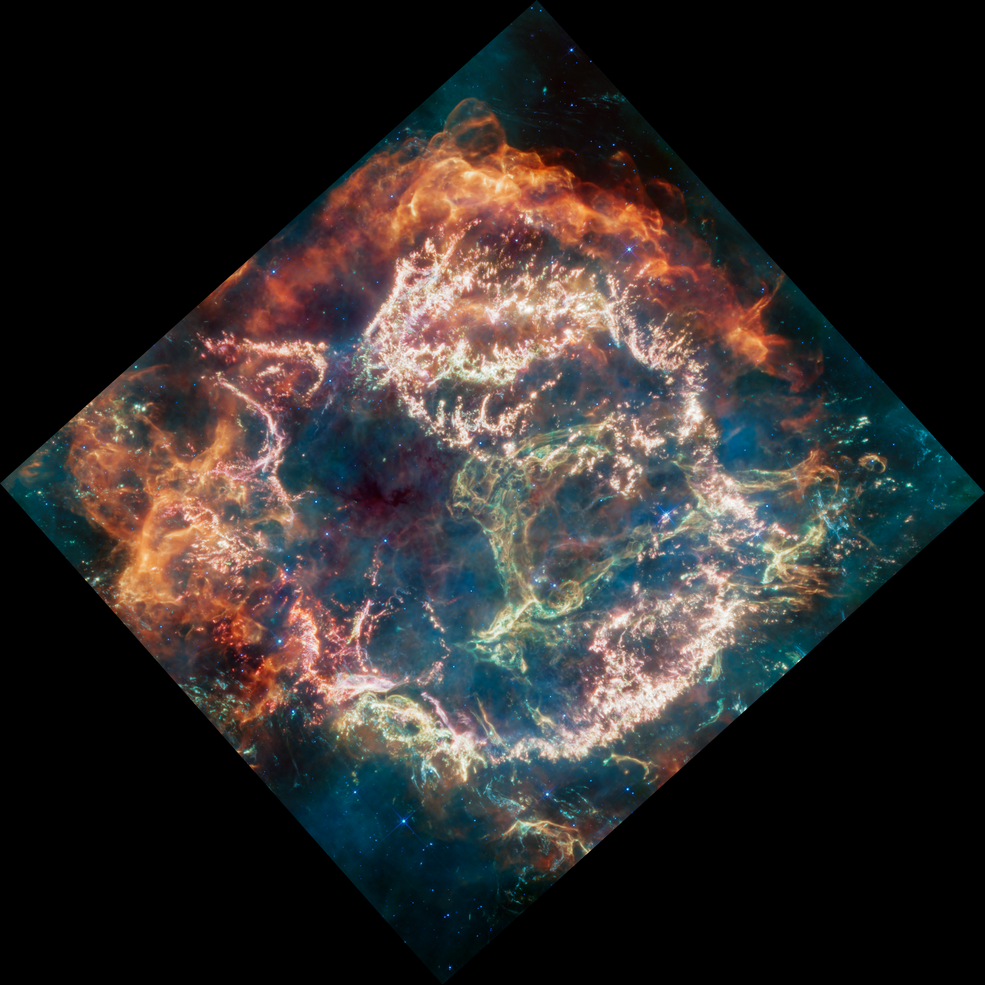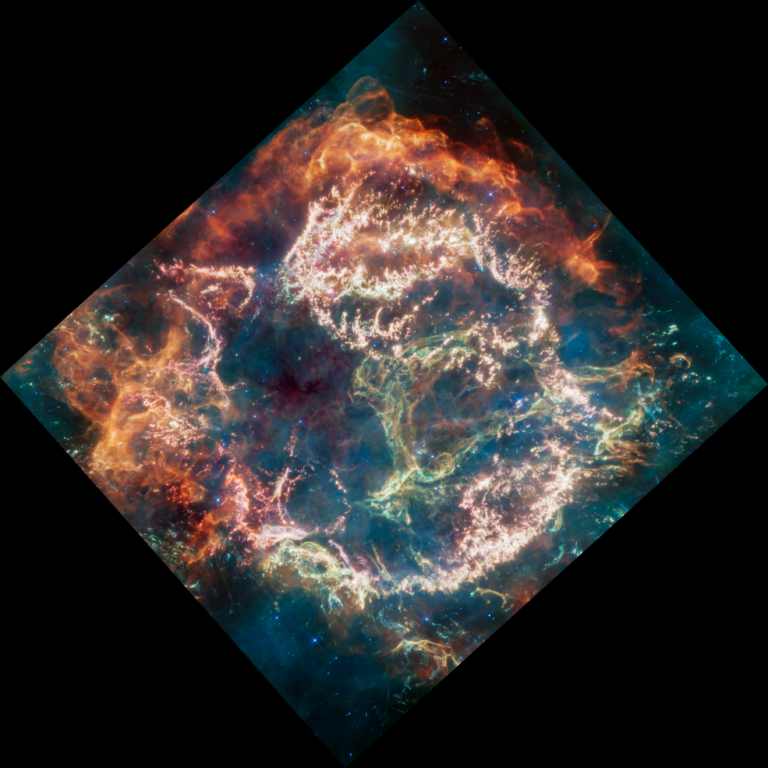New Details in Cassiopeia A Revealed by Webb Telescope for the First Time
NASA’s James Webb Space Telescope has captured a new mid-infrared image revealing one such remarkable example – the supernova remnant Cassiopeia A (Cas A), formed by a star explosion that occurred 340 years ago from Earth’s perspective. Cas A is the youngest known remnant from a massive, exploding star in our galaxy, offering a unique opportunity to learn more about how such supernovae occur.
Danny Milisavljevic of Purdue University, principal investigator of the Webb program that captured these observations, said, “Cas A represents our best opportunity to look at the debris field of an exploded star and run a kind of stellar autopsy to understand what type of star was there beforehand and how that star exploded.” Tea Temim of Princeton University, a co-investigator on the program, added, “Compared to previous infrared images, we see incredible detail that we haven’t been able to access before.”
Cassiopeia A is a classic example of a supernova remnant that has been extensively studied by various ground-based and space-based observatories, including NASA’s Chandra X-ray Observatory. By combining multi-wavelength observations, scientists can obtain a more comprehensive understanding of the remnant. Cassiopeia A (Cas A) is a supernova remnant located about 11,000 light-years from Earth in the constellation Cassiopeia. It spans approximately 10 light-years. This new image uses data from Webb’s Mid-Infrared Instrument (MIRI) to reveal Cas A in a new light. Credits: NASA, ESA, CSA, D. D. Milisavljevic (Purdue), T. Temim (Princeton), I. De Looze (Ghent University). Image Processing: J. DePasquale (STScI).
Cassiopeia A (Cas A) is a supernova remnant located about 11,000 light-years from Earth in the constellation Cassiopeia. It spans approximately 10 light-years. This new image uses data from Webb’s Mid-Infrared Instrument (MIRI) to reveal Cas A in a new light. Credits: NASA, ESA, CSA, D. D. Milisavljevic (Purdue), T. Temim (Princeton), I. De Looze (Ghent University). Image Processing: J. DePasquale (STScI).
Dissecting the Image
The new image of Cas A presents striking colors, with infrared light being converted into visible-light wavelengths, and is rich in scientific information that the team is just beginning to unravel. The bubble’s exterior, particularly at the top and left, displays curtains of material appearing orange and red due to the emission from warm dust. This indicates where ejected material from the exploded star is colliding with surrounding circumstellar gas and dust.
Inside this outer shell lie mottled filaments of bright pink studded with clumps and knots, representing material from the star itself, shining due to a mixture of various heavy elements like oxygen, argon, neon, and dust emission.
Ilse De Looze of Ghent University in Belgium, another co-investigator on the program, stated, “We’re still trying to disentangle all these sources of emission.” The stellar material can also be seen as fainter wisps near the cavity’s interior.
The most prominent feature is a green loop extending across the right side of the central cavity. “We’ve nicknamed it the Green Monster in honor of Fenway Park in Boston. If you look closely, you’ll notice that it’s pockmarked with what look like mini-bubbles,” said Milisavljevic. “The shape and complexity are unexpected and challenging to understand.”
Origins of Cosmic Dust – and Us
The Cassiopeia A (Cas A) supernova remnant, created by a massive stellar explosion 340 years ago, may provide answers to several scientific questions, including the origin of cosmic dust. This is because observations have found that young galaxies in the early universe are filled with massive amounts of dust, the building blocks of which are heavy elements that are ejected into space during supernova explosions. However, existing observations of supernovae have been unable to explain the amount of dust seen in those galaxies.
By studying Cas A with the James Webb Space Telescope, scientists hope to better understand the remnant’s dust content and how it was formed in different regions with varying gas compositions. This information can help inform our understanding of the origin of the building blocks of planets and life. Supernovae, like the one that created Cas A, spread essential elements across interstellar space, which can seed new generations of stars and planets. The Cas A remnant is located in the constellation Cassiopeia, spans about 10 light-years, and is situated 11,000 light-years away from Earth.
Source: NASA
Do not forget to share your opinion with us to provide you with the best posts !
[zombify_post]




0 Comments